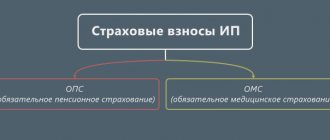Social protection of citizens is a guarantee of the government bodies of the Russian Federation to the population. In this regard, laws have been developed to control the process of distribution of benefits between citizens.
Dear readers! The article talks about typical ways to resolve legal issues, but each case is individual. If you want to find out how to solve your particular problem , contact a consultant:
+7 (499) 938-81-90 (Moscow)
+7 (812) 467-32-77 (Saint Petersburg)
8 (800) 301-79-36 (Regions)
APPLICATIONS AND CALLS ARE ACCEPTED 24/7 and 7 days a week.
It's fast and FREE !
Social savings funds make it possible to maintain an adequate standard of living during periods of accidents or crises occurring throughout the country, when the level of income of the working population decreases.
What it is
Employers are the payers of social insurance contributions. The received funds are distributed among social funds and ensure the right to receive benefits for citizens, if necessary.
State insurance funds, non-state pension funds, and other insurance organizations can pay benefits.
If:
- A citizen needs treatment after receiving an injury or illness. Benefit payments are provided for the birth of a child or disability;
- loss of a breadwinner, provides for the maintenance of remaining dependents, including children and disabled people;
- Citizens' incomes are below the subsistence level; benefit recipients will include large families and pensioners.
Contributions to social funds from employers can be divided into two types:
- actual. Provides for payments to a third party. These include government or non-government funds. Actual deductions are made within the framework of existing social programs. Since 2001, payments have been combined into a single social tax.
Currently, three directions of payments have been defined: the Pension Fund, medical and social insurance of the Russian Federation.
The actual fund provides for contributions from industrial accidents and occupation-related diseases acquired during the work of employees. This insurance is paid by the Social Fund of the Russian Federation, to which the employer makes separate payments.
- conditional. It does not involve the involvement of third parties; it is carried out by the employer to ensure an adequate standard of living for its former employees or employees who are dependent on the organization after receiving an industrial injury.
To determine the amount of payments, the actual value of contributions made in the current period by the employer is used. These include:
- payments in case of accidents that led to partial or complete disability of the employee;
- compensation for moral damage, its amount is determined in court;
- payments to child care employees.
- the amount of severance pay upon termination of the employment contract;
- payments to employees upon liquidation of a company or reduction in staff numbers.
Bid
The rates for contributions to the pension fund have undergone significant changes in the legislative acts of the Russian Federation.
As of 2015, the general social tax rate is 30%. Employers send 22% of the wage fund to the pension fund, 5.1% goes to medical care, and the social insurance fund receives 2.9%.
Reforms are being carried out in relation to the pension fund, which change the size of rates for different categories of citizens. Thus, the new changes divided the rate in the Russian Pension Fund into two parts, for persons who chose a non-state insurance company and those who have not made a choice.
For the first, 16% is sent to the Pension Fund, and 6% is the funded part of the pension and is transferred to the Non-State Pension Fund. The pension fund also operates the concept of a maximum base for calculating insurance premiums.
The size of the limit changes annually; as of 2015, it is 711 thousand rubles. If this value is exceeded, the rate will be 10%.
There is also a maximum contribution limit for the social insurance fund. If the payment amount is 670 thousand rubles, only 10% needs to be sent to the fund. With regard to the medical fund, the limit has been abolished in connection with the draft law, which came into force in 2015.
Contributions to the Pension Fund of the Russian Federation involve a number of additional contributions for workers in heavy and hazardous industries, which also provides them with early retirement. The introduction of these rates occurred at the beginning of 2013, the size of which has now reached 6 and 4%.
Workers in underground production are subject to a higher additional rate. The remaining categories of the working population falling under the law are prescribed in Federal Law No. 174. Additional deductions are made regardless of reaching the salary limit.
What the social insurance system of the Russian Federation includes is discussed in the article: social insurance system. You can find out about state social insurance here.
Results
Despite the fact that when planning expenses for contributions to extra-budgetary funds, they are calculated using a general percentage, their actual payments are made in different areas. Thus, consolidated payments of 30.2% are divided into several separate amounts:
- 22% - in the Pension Fund of the Russian Federation;
- 5.1% - in the Federal Compulsory Medical Insurance Fund of the Russian Federation;
- 2.9% - in the Social Insurance Fund for insurance for temporary disability and in connection with maternity;
- 0.2% - in the Social Insurance Fund for insurance against accidents and occupational diseases.
Almost all remuneration received under employment contracts, whether labor contracts or civil law agreements, is taken into account as an object of taxation. The list of benefits is not so large, and can be found in Law No. 212-FZ.
Individual entrepreneurs, as well as privately practicing lawyers, advocates, and notaries, transfer contributions from their income independently, unlike working citizens, for whom employers perform this function.
It is also worth remembering that from 2021 a new Chapter 34 of the Tax Code of the Russian Federation will come into force, which will regulate these payments.
Similar articles
- Basic rules for calculating insurance premiums
- How are contributions to the Social Insurance Fund calculated?
- Concept and features of the structure of insurance premiums
- FSS contributions in 2021
- Calculation of insurance premiums for sick leave
Percent
Entrepreneurs who conduct business on general terms and do not belong to the preferential category pay 30% to the social fund. But the Federal Law provides for the division of categories of employers and their payment of reduced interest.
The first category of entrepreneurs pays the following interest:
| Name | Percent |
| Russian Pension Fund | 8 |
| Social Insurance Fund | 2 |
| Compulsory Medical Insurance Fund | 4 |
These include enterprises that are engaged in the implementation of intellectual developments in the field of production.
Organizations created with funding from budget funds in a scientific direction, participating in projects or being permanent partners of companies for the development and implementation of intellectual products. They also include organizations involved in the development and implementation of computer programs.
The second category of organizations deducts:
| Name | Percent |
| Pension Fund | 20 |
| FSS | 0 |
| Compulsory Medical Insurance Fund | 0 |
This category includes entrepreneurs who use a simplified tax system in their activities. These include non-profit organizations and charitable foundations registered in accordance with the requirements of the legislation of the Russian Federation.
Pharmacy companies and individual entrepreneurs paying UTII.
The third category of enterprises make contributions to funds in the following ratio:
| Name | Percent |
| Pension Fund | 14 |
| FSS | 0 |
| Compulsory Medical Insurance Fund | 0 |
These include organizations that are participants in projects of the Skolkovo Innovation Center. This Federal Law has been in force since 2010.
The fourth category of entrepreneurs, which has preferential rates for social contributions, pays:
| Name | Percent |
| Pension Fund | 6 |
| FSS | 1,5 |
| Compulsory Medical Insurance Fund | 0,1 |
To make payments under this tariff, the organization must obtain the status of a participant in the free zone, which operates in the territory of Crimea and Sevastopol.
Who should pay insurance premiums?
The main groups of enterprises and entrepreneurs obligated to pay contributions are listed in the law “On insurance contributions to the Pension Fund, Social Insurance Fund, Federal Compulsory Medical Insurance Fund of the Russian Federation” dated July 24, 2009 No. 212-FZ. These include:
- Legal entities and individuals paying wages for hired work, including those who do not have the status of individual entrepreneurs. The exception is for persons who are covered by the benefits mentioned in Chapter. 8 of Law No. 212-FZ.
- Other business entities, if they are assigned a similar obligation in accordance with the requirements of this law.
This category also includes citizens who provide themselves with self-employment through private practice (notaries, lawyers, lawyers, etc.).
If an individual entrepreneur or any other self-employed entity attracts workers and pays them wages, then he will pay contributions both for himself and for the hired mercenaries.
Employers' contributions to social insurance
Based on current laws governing the activities of social funds, all enterprises are required to make payments.
The amount of deductions is determined by the Federal Law, as well as regional regulations. The current rates are influenced by the industry in which the organization operates.
It should be noted that cases of non-payment of social contributions by an employer are not grounds for depriving a citizen of social benefits for old age, temporary disability or disability.
Violation of payment deadlines implies the employer's liability to regulatory authorities and payment of fines. To identify such violations, tax authorities carry out on-site inspections; starting from 2015, their duration will be up to six months.
Starting this year, a deferment of payments to social insurance funds will be introduced. This change has been introduced into the legislation of the Russian Federation. Previously, organizations had to pay social obligations by December 31. Now they have the opportunity to take advantage of installments exceeding a period of one year.
To do this, the company must conduct its activities with a seasonal nature or be recognized as having suffered from natural disasters. With some exceptions, budgetary organizations can receive a deferment.
What expenses should be taken into account as social security contributions?
According to Russian laws, expenses for social obligations include contributions to social, pension and health insurance. Until 2001, such expenses also included contributions to the fourth extra-budgetary fund - the Employment Fund. But after the transition to a single social tax, employers’ obligations were reduced to transferring payments only to three extra-budgetary funds.
Despite the fact that the employment fund has long been gone, some departmental guidelines for accountants still retain the wording stating that a certain percentage of labor costs must be transferred to this organization. But this recommendation no longer needs to be followed.
Deduction formula
To calculate contributions to the pension fund, a formula is used that takes into account the costs incurred by the enterprise for the production and sale of goods, it has the following form:
Contributions to the Pension Fund = salary of the employee * percentage of deductions / 100;
To calculate the amount of contributions to the Social Insurance Fund of the Russian Federation, the following formula is used:
Contributions to the Social Insurance Fund = employee's salary * percentage of contributions / 100;
The health insurance premium is calculated using the formula:
Contributions to compulsory medical insurance = employee’s salary * percentage of deductions / 100.
The resulting values are calculated in rubles, so to find the full deduction amount, you should add up the results.
To summarize, it should be concluded that social contributions to funds are a deferred part of each employee’s salary, the return of which occurs at the time of an emergency or ensures the citizen’s old age.
In an idealized view, social contributions are an agreement between the workforce and the enterprise. As the practice of Western countries shows, the way to reduce government intermediation in this system is the most effective.
What is voluntary social insurance, read the article: voluntary social insurance. You can read what is included in the concept of social insurance in this article.
Find out about social insurance calculations here.






